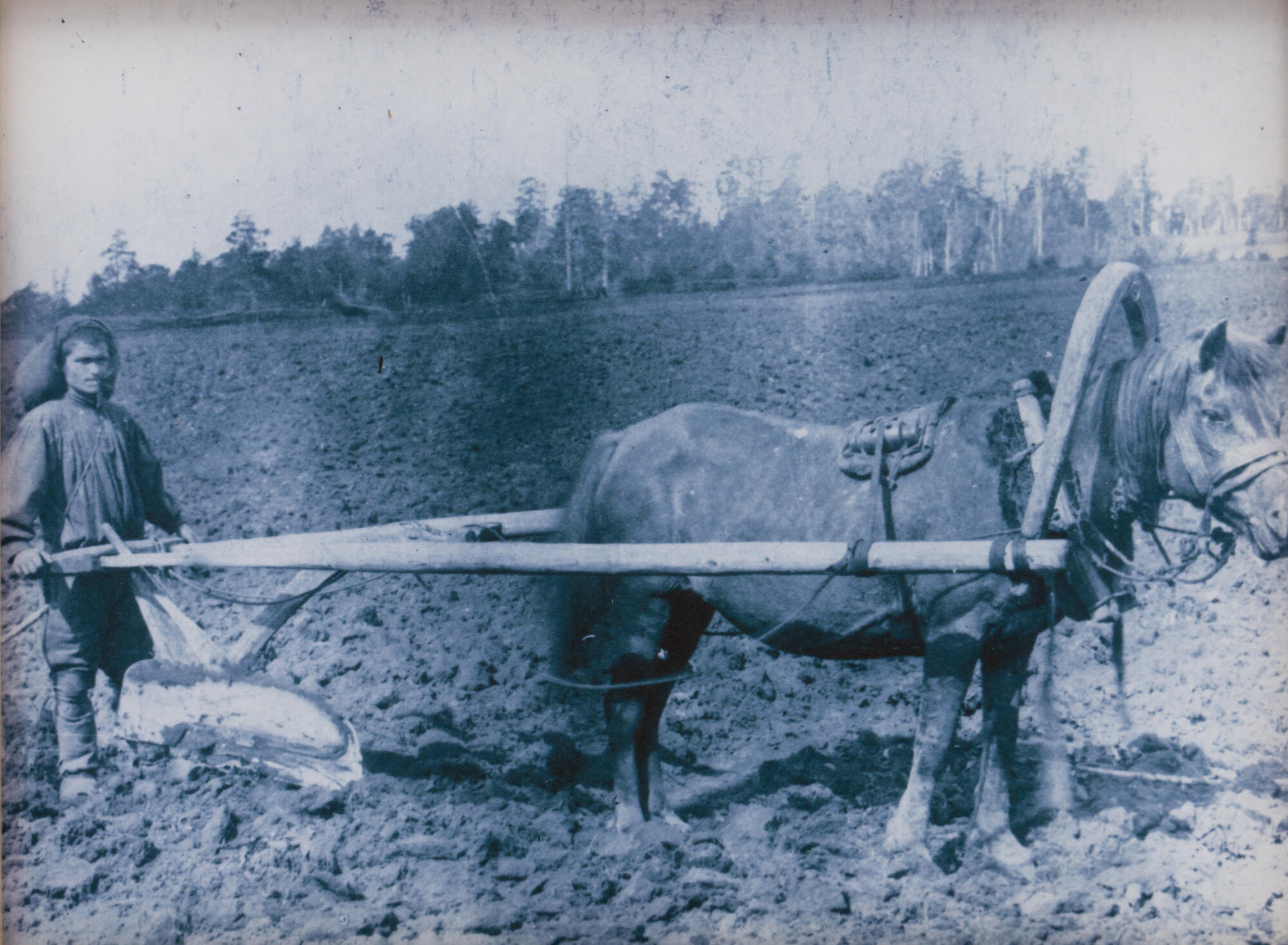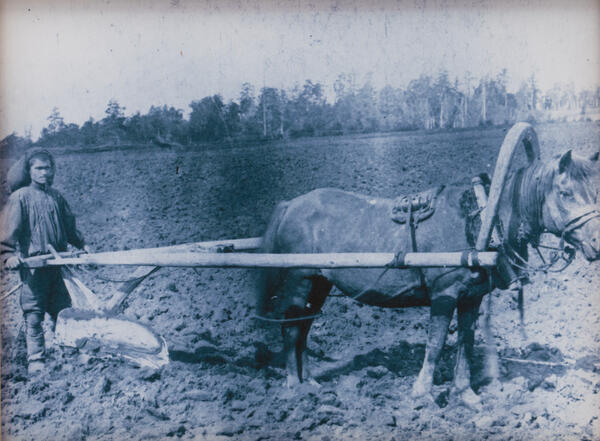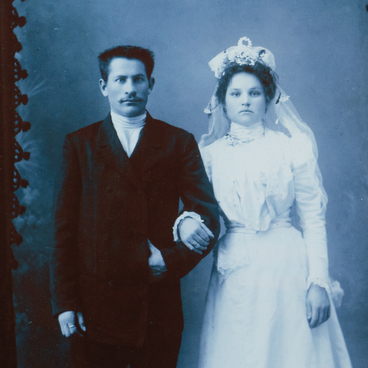The photo of the late 19th — early 20th century depicts a peasant of the Yenisei province Dmitry Fyodorovich Bryukhanov. For a long time, peasants made up the majority of the population of the Russian Empire, regardless of the region. They were engaged in agriculture and lived in accordance with the cycle of cultivation and harvesting. The basis of the economy of the Yenisei province was agriculture, in which most of the population of the region was employed. Mainly grain crops were cultivated: rye, wheat, oats, and barley. At the same time, there was also a regional specialization: in the Yenisei district, the advantage was given to winter rye, the most reliable of grain crops, and in the southern districts — spring rye, wheat, and oats.
In the Governorate, all the cultivated land was divided into two parts: while an area was cultivated, the other area ‘rested’ (was ‘fallow’). Such a system of agriculture is called fallow. It has been known since ancient times and is used to restore soil fertility. After the area left to lie fallow was overgrown with weeds, it was again plowed and seeded. The use of such a system allowed farmers to adapt to the difficult terrain in Siberia and harsh weather changes.
For example, during the years of drought, farmers plowed reserve land in the lowlands, in rainy years they used fallow lands on the hills. As the demand for bread grew, production was again expanded at the expense of fallow lands, and, conversely, a demand reduction entailed the transfer of part of the land to the reserve. By the beginning of the 20th century, reserve lands in the Yenisei province accounted for almost 40% of the total. The level of tilling there was primitive and had not changed since the middle ages.
The lack of innovations in agriculture was explained by the economic profitability of outdated farming methods. Having a large amount of free land, it was easier and cheaper to use ‘rested’ plots instead of using fertilizers on the old field. For example, at the end of the 19th century, the development of one arpent (1.09 hectares) of new field cost a peasant 15 rubles and fertilizing an old plot of the same area — 13 rubles. At the same time, the new field gave a good harvest for many years, and fertilizers had to be applied regularly.
For a long time, the peasants used a wooden sokha (light wooden plow) to cultivate the land. Unlike the plow, the sokha required less effort for the horse, but more strength from the plowman himself. In addition, the sokha did not turn the layer of earth over like a plow, but only rolled it aside. Although the plow was a more effective tool, it became widespread in the Yenisei province only at the end of the 19th century. In the 1880s and 1890s, machinery began to be used in the region: threshing machines, seeders, winnowers, and the most developed farms also used soil fertilizer.
In the presented photo of a plowman, it is worth paying attention to the headdress, which resembles a massive wineskin. This is a special bag in which the grain was put. After plowing, the peasant took the grain out of the bag and immediately started planting. People gathered the harvest with the help of hand tools: wheat, rye; and barley — with the help of sickles; oats were scythed.
In the Governorate, all the cultivated land was divided into two parts: while an area was cultivated, the other area ‘rested’ (was ‘fallow’). Such a system of agriculture is called fallow. It has been known since ancient times and is used to restore soil fertility. After the area left to lie fallow was overgrown with weeds, it was again plowed and seeded. The use of such a system allowed farmers to adapt to the difficult terrain in Siberia and harsh weather changes.
For example, during the years of drought, farmers plowed reserve land in the lowlands, in rainy years they used fallow lands on the hills. As the demand for bread grew, production was again expanded at the expense of fallow lands, and, conversely, a demand reduction entailed the transfer of part of the land to the reserve. By the beginning of the 20th century, reserve lands in the Yenisei province accounted for almost 40% of the total. The level of tilling there was primitive and had not changed since the middle ages.
The lack of innovations in agriculture was explained by the economic profitability of outdated farming methods. Having a large amount of free land, it was easier and cheaper to use ‘rested’ plots instead of using fertilizers on the old field. For example, at the end of the 19th century, the development of one arpent (1.09 hectares) of new field cost a peasant 15 rubles and fertilizing an old plot of the same area — 13 rubles. At the same time, the new field gave a good harvest for many years, and fertilizers had to be applied regularly.
For a long time, the peasants used a wooden sokha (light wooden plow) to cultivate the land. Unlike the plow, the sokha required less effort for the horse, but more strength from the plowman himself. In addition, the sokha did not turn the layer of earth over like a plow, but only rolled it aside. Although the plow was a more effective tool, it became widespread in the Yenisei province only at the end of the 19th century. In the 1880s and 1890s, machinery began to be used in the region: threshing machines, seeders, winnowers, and the most developed farms also used soil fertilizer.
In the presented photo of a plowman, it is worth paying attention to the headdress, which resembles a massive wineskin. This is a special bag in which the grain was put. After plowing, the peasant took the grain out of the bag and immediately started planting. People gathered the harvest with the help of hand tools: wheat, rye; and barley — with the help of sickles; oats were scythed.



